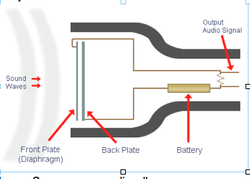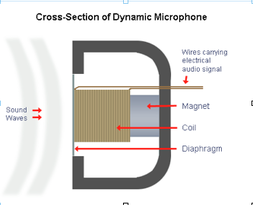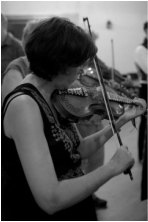|
We are learning about recording this year which is fascinating and challenging. Our first lessons involved the basics like looking at the mixing desk, microphones, and learning about safety in the studio. Next we researched different types of microphones. Condenser and Dynamic microphones  Source: www.mediacollege.com There two main types of microphones. Each has pros and cons and they are suited to particular types of recording. Condenser microphones These have a greater frequency response and usually have a louder output. But they also pick up loud noises and are mostly used in studios. They are more fragile than dynamic microphones. They are also more expensive in the main (although you can buy cheap ones). Condenser microphones use a capacitor to convert acoustic energy into electrical signals and they need a power supply too, through a mixing desk or audio interface. There are two main types - large and small diaphragm microphones. Large diaphragm ones are supposed give a warmer sound for bass instruments. Small diaphragm microphones are supposed to be better at picking up fast sounds (eg string instruments). They are sometimes used for live orchestral work.  Dynamic microphones These stand up to wear and tear better, are more reliable. They are also moisture resistant so they are the better choice for live performances. They don’t need their own power like condenser microphones. They withstand high sound pressure and so are better for loud guitars and some drums e.g kick drums, tom toms etc. They pick up lower frequencies well. A good choice of dynamic microphone if you are on a budget is the Schure SM57 for instruments and SM58 for vocals. All microphones have frequency response patterns which means how accurately they can pick up sounds at different frequencies. Ideally a microphone should pick up all frequencies equally well. But the reality is that no microphone can do that and the trick is to pick the right one for the job. So if recording bass drums you shouldn’t use a microphone that is great at picking up treble sounds.
0 Comments
Your comment will be posted after it is approved.
Leave a Reply. |
Fiona Harrison
|


 RSS Feed
RSS Feed
